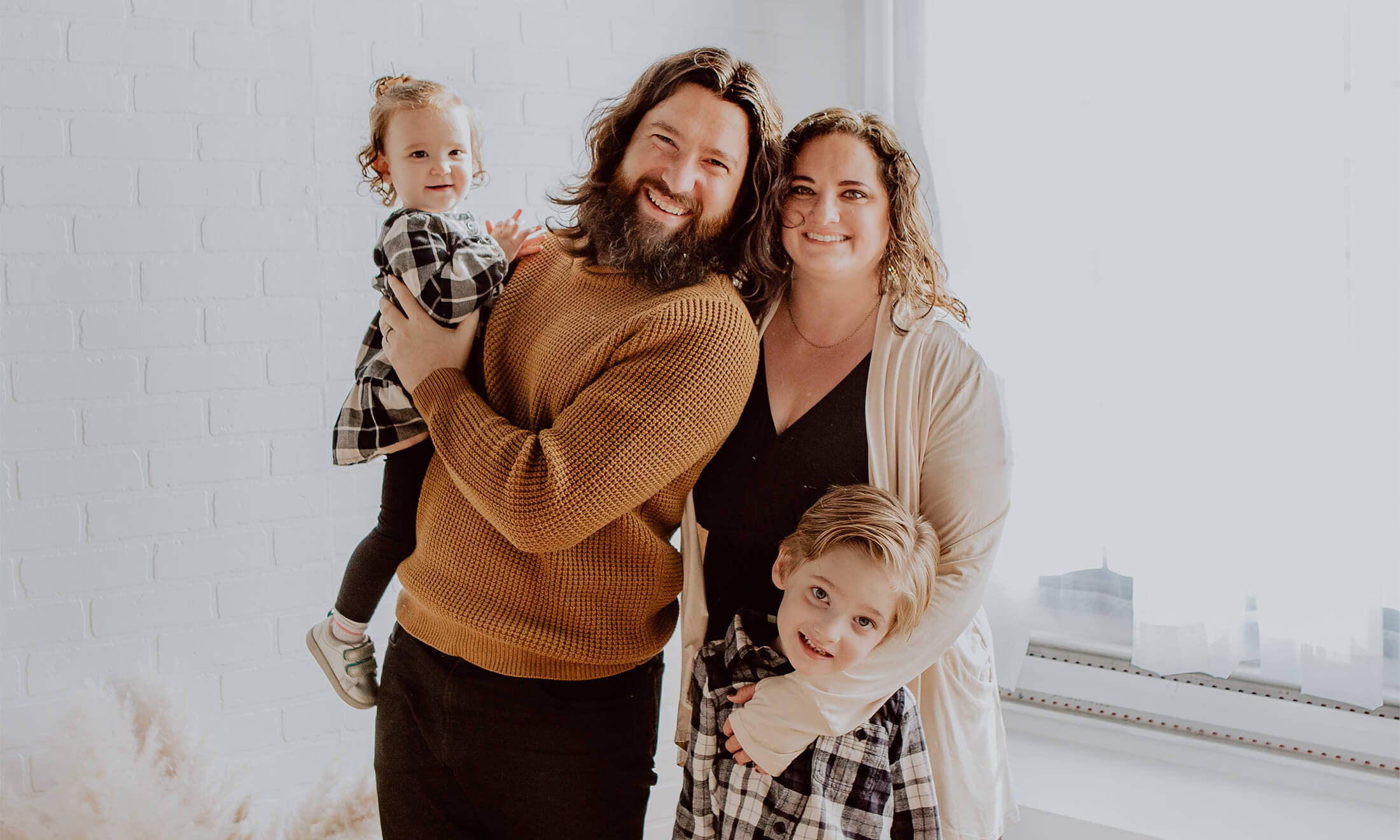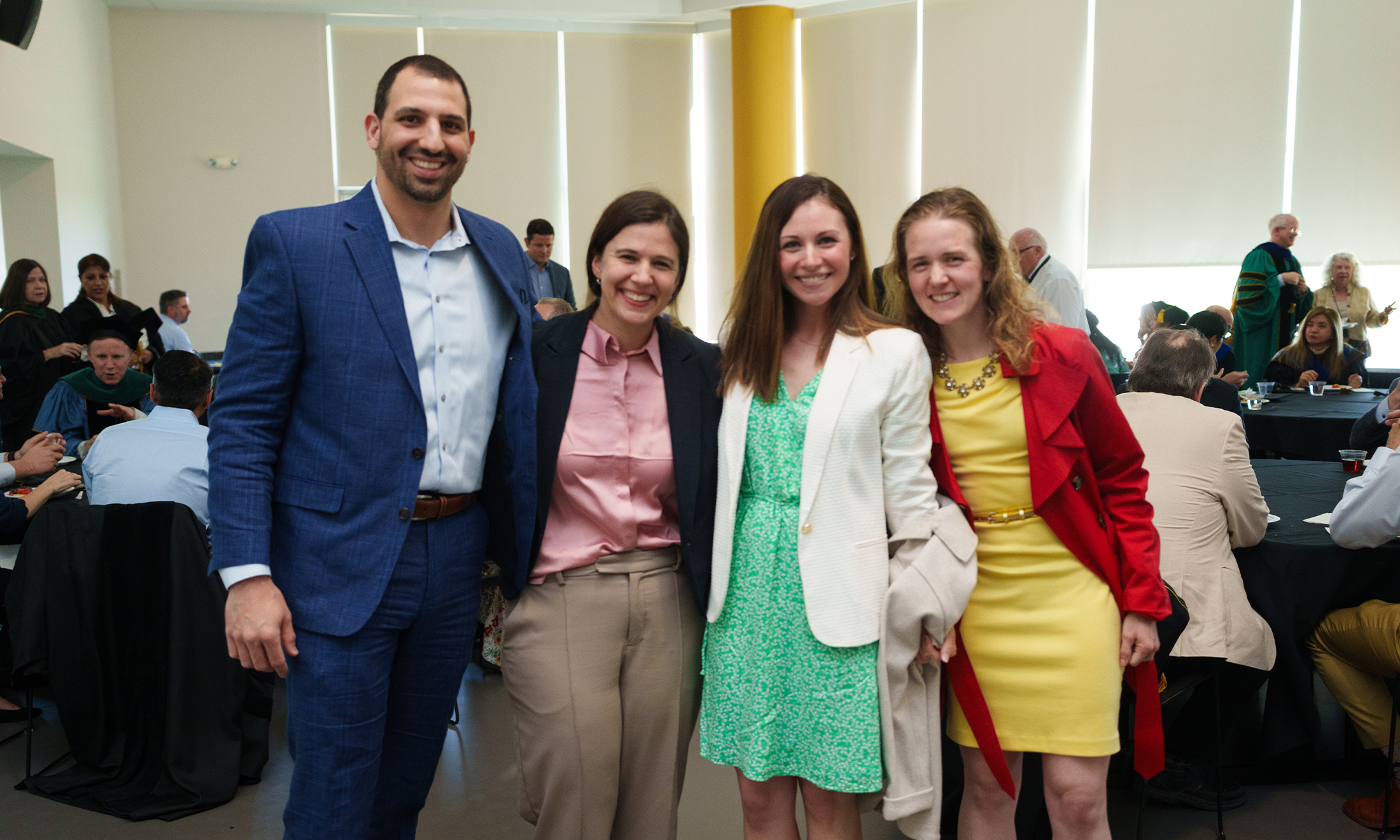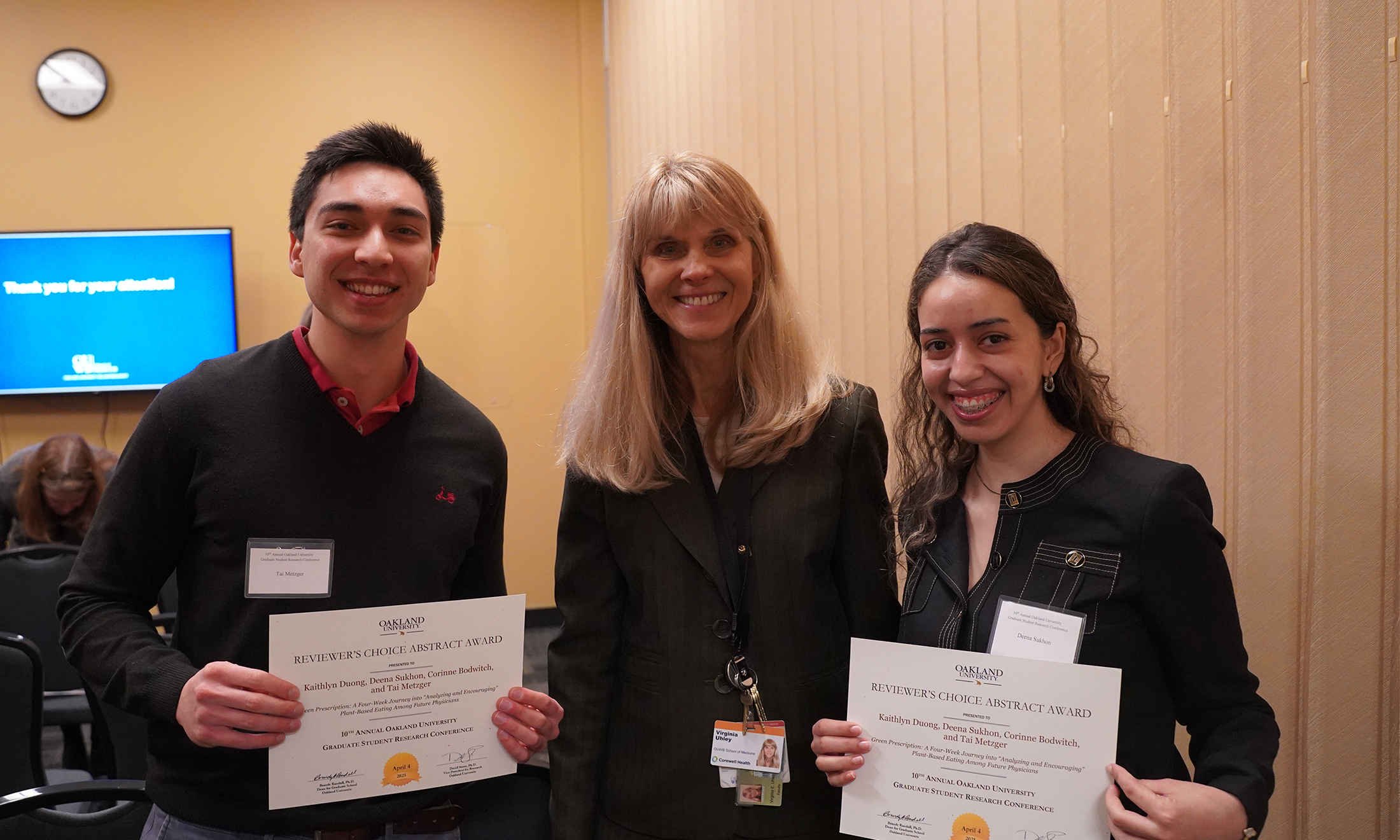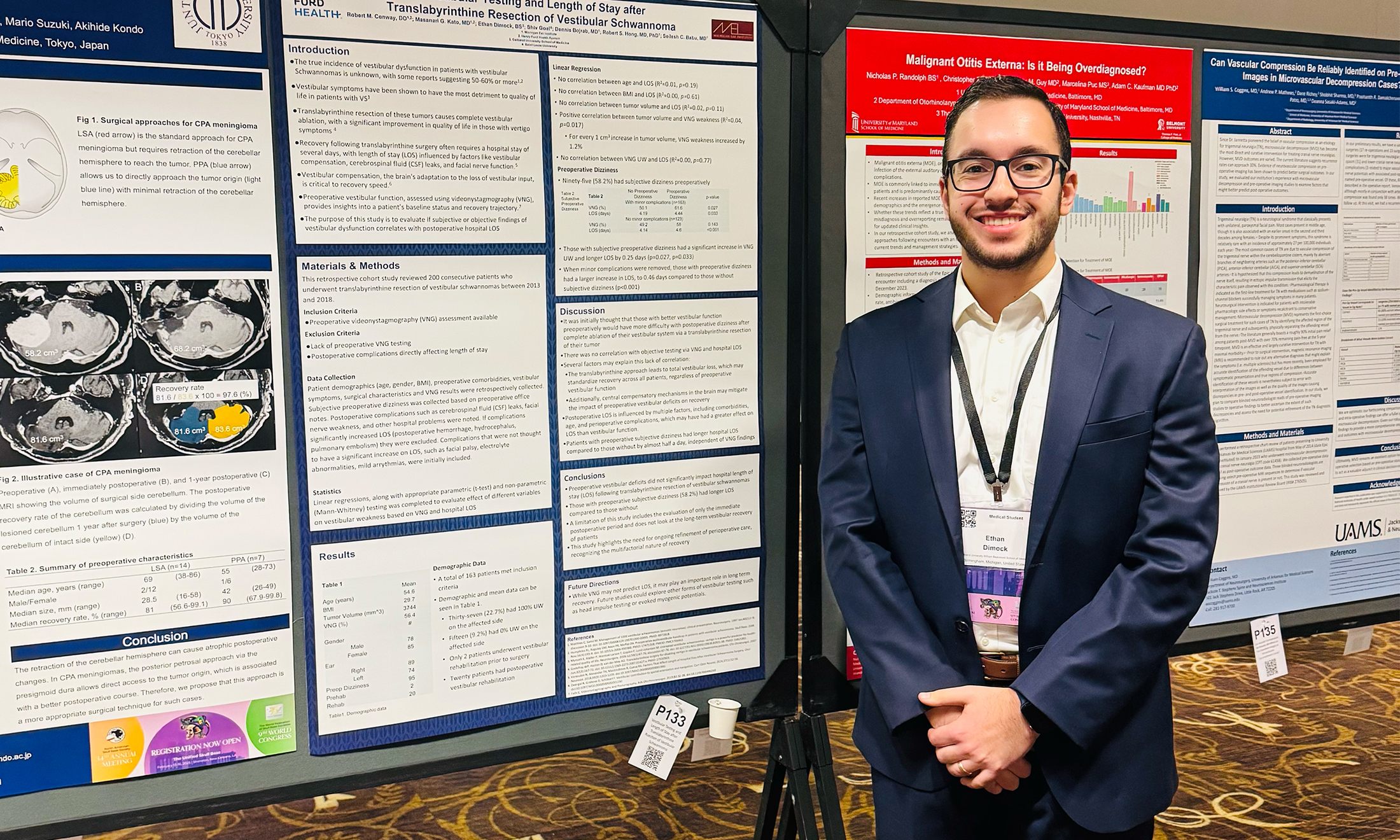‘A sense of responsibility’
Nate Loudon, M.D., OUWB ’20, preps for chief residency at Michigan Medicine, reflects on the road less travelled
It can be uncomfortable, intimidating, and downright scary to put oneself out there and risk exploring the unknown — but for Nate Loudon, M.D., OUWB ’20, taking chances is a way of life.
Consider some of the ways he’s put himself out there: leaving Michigan to earn an undergraduate degree in California; volunteering at a small church in Texas; going on mission trips to Guatemala and Tanzania; and even serving as a youth pastor in Scotland.
It’s all led to where he is today: A fourth-year resident in University of Michigan Medicine’s interventional radiology-integrated program. He’s set to be a chief resident next year and will graduate as a fellow in 2026, following his sixth and final year.
And, he says, it can all be traced back to a willingness to take chances on the unknown — especially when it comes to medicine.
“People who go into medicine tend to do so because they're kind and have a desire to help people,” he says. “If you are interested and passionate about what other people around you are doing, chances are very good that they'd be happy to get you involved.”
‘A sense of responsibility’
Loudon grew up in Sterling Heights and Howell, both in southeastern Michigan.
He was primarily homeschooled before heading to El Paso, Texas, to volunteer at a small church. Among other things, the church went on short-term mission trips to places like Guatemala.
“I saw poverty for the first time…and it really imparted to me a sense of responsibility…a desire to use my life to the best of my ability to do good in the world and serve others who are in need,” he says.
From El Paso, Loudon set his sights on Inverness, Scotland, where he served as a youth pastor at a small church.
“Scotland was a place I always wanted to go so I thought ‘Heck, why not?’” he says.
He spent the better part of a year there doing youth ministry.
“I also continued to reflect a lot on where I saw my life going,” he says. “I knew I wanted to do something related to service…something a little more practical and with a science bend to it.”
When he returned to the U.S., he enrolled in the nursing program at University of California – San Diego, where he earned a bachelor’s degree. (It’s also where he met the woman who would eventually become his wife, Allison.)
His nursing school experiences helped him realize he “would probably be better off going to med school.”
“I knew I wanted to do something procedural and hands-on,” he said. “Being a (physician’s assistant) or nurse practitioner would significantly limit what I was able to do in that regard.”
A video that Loudon discovered on YouTube would lead to his return to Michigan.
‘The clouds parted’
Loudon says that he applied to numerous schools, but a video featuring Robert Folberg, M.D., founding dean, OUWB, made him realize OUWB might be the perfect fit.
“He was talking about the school’s mission, vision, and values,” says Loudon. “I watched it and felt like OUWB was the perfect match for who I am and the way that I feel about my approach to medicine.”
Loudon says Allison often tells the story about him pacing around and “talking about all of the reasons why I thought OUWB would be such a great place and how I would love to go there.”
It turned out to be true.
“OUWB is an amazing place to do med school because you have all of the resources of a major academic medical center with a more community feel,” he says. “You get the best of both worlds.”
He also gained plenty of useful clinical experience.
“One thing that served me well during third and fourth year was my philosophy of trying to squeeze every ounce of medical learning I could out of each rotation,” he says.
During that time, Loudon discovered interventional radiology (IR) — a medical specialty that uses minimally-invasive image-guided procedures to diagnose and treat diseases in various organs. He was able to shadow an interventional radiologist and loved how those in IR seemed “down to earth.”
When he learned that IRs also are fully certified to read diagnostic radiology, Loudon says he was “totally sold” on the specialty because it allowed him to have a breadth of knowledge he sought across different organ systems.
“It was the perfect thing for me,” he says. “Like the clouds parted, the angels were singing on high…I found a field that was a great fit for me.”
It also led to Loudon working in Tanzania during part of his fourth year at OUWB on a project called Road2IR. In short, Road2IR was developed to introduce the specialty of IR to the country of Tanzania.
“How could I not want to be a part of something like that?” asks Loudon. “I just sent an email to the guy at Yale whose email address was listed on the project and he helped me get involved which resulted in me going on a trip to Tanzania and making some amazing lifelong career connections.”
‘I love it’
Loudon matched in interventional radiology-integrated at University of Michigan Medicine.
“I love it,” he says. “The training we get is robust.”
Because of the way the program is structured, Loudon spent his first year of residency on surgery.
Today, Loudon splits his workdays between IR and diagnostic radiology. When not at work, he enjoys spending time with Allison and their two children, Owen, 6, and Avery, 2.
Loudon’s also been involved in research. Specifically, he was an investigator on the HOPE4LIVER trial that resulted in FDA approval of Histotripsy for the treatment of liver cancer.
Histotripsy is a new ablation non-invasive modality developed at the University of Michigan. It ablates tissue using mechanical cavitation from ultrasound waves. Among other benefits is the fact that it is a treatment that is entirely external to the patient.
It was the first U.S.-based trial to use the device to treat cancer in humans.
And it’s one of the most recent examples of Loudon taking a chance on the unknown.
“When I first heard about Histotripsy I was so excited about the technology and wanted to be a part of its early days in whatever way I could, so I emailed several people and (the principal investigator) was happy to get me involved,” says Loudon.
It’s Loudon’s hope that others draw inspiration from his life of “twists and turns.”
“Don’t be afraid to shoot somebody an email if something sparks your interest, the worst they can say is no and then you're just in the same situation you started in,” he says.
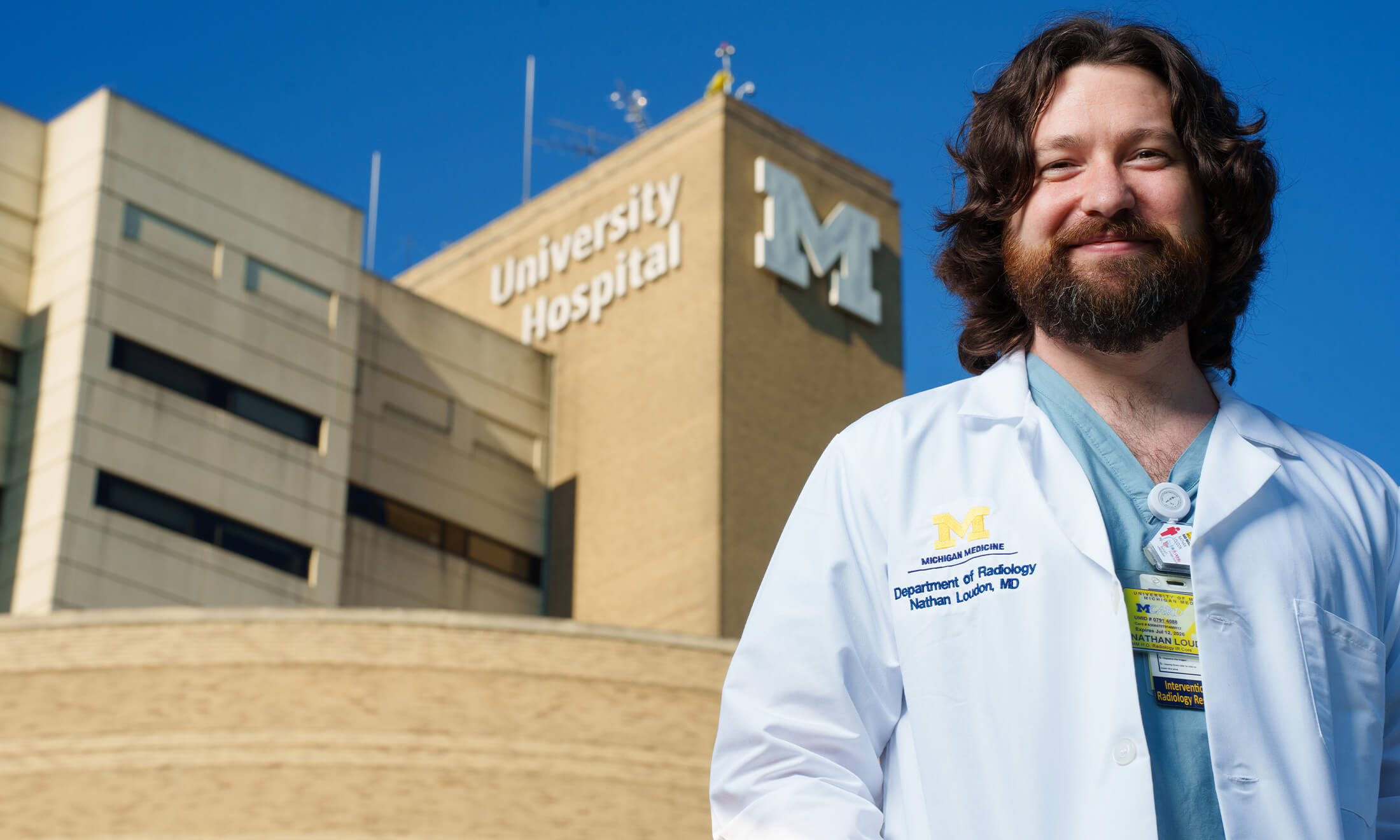
 August 07, 2024
August 07, 2024
 By Andrew Dietderich
By Andrew Dietderich